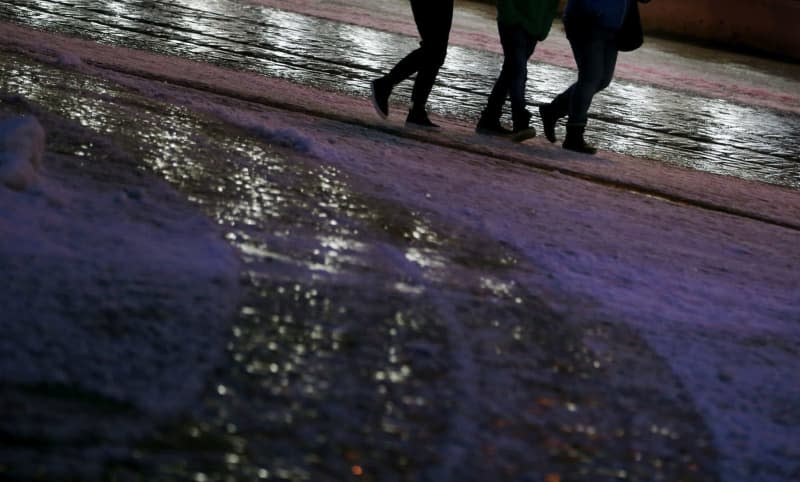A lesson in falling: How to limit damage when you slip on some ice

- Oops!Something went wrong.Please try again later.
Turn to your side: If there's one thing to think of when you lose control on a slippery surface, it's that you need to use those few split seconds before you hit the ground to roll your body as much as you can onto your side.
Because if you fall on your back or front, you risk thrusting your entire weight on one isolated part of the body, such as an outstretched hand, says Christopher Spering, head of accident prevention department of Germany's Society for Orthopaedics and Trauma Surgery (DGOU).
Falling on your side spreads out the impact of the fall onto several parts of the body, especially the bottom and thighs, which are softer, lower to the ground and less prone to severe damage.
In doing so, you help avoid the broken wrist or head injury typical with patients admitted to hospital after slipping on ice.
Experts have various pieces of advice, like swinging your arms to guide your fall and relaxing the body to distribute the blow, but Spering believes turning to the side is the most important thing to consider during a typical fall.
Falling forwards - and not backwards where you can't see what you're about to hit - is also imporant, says Spering, who after years of seeing injuries from bad falls has plenty of advice for everyone - frail or able-bodied - on minimizing damage.
The problem is that people tend to fall in an uncontrollable way - without any ability to steer which part of their body they are about to fall on.
Especially on ice, this happens with such force from the momentum of walking that it's impossible to correct the body's course.
That's why it helps not only to know how to fall, but also to walk on slippery slopes.
To prepare for a fall when walking on ice, trauma surgeons recommend bending over slightly and taking small steps with your head forwards, not unlike a penguin.
"Because nothing is more dangerous than walking normally," says Spering. You would then have little stability and end up falling on the back of your head. If you're taking blood thinning medicine, then an injury like this can quickly turn fatal.
Falling on your hips is also dangerous, which is why it helps to walk in a more front-heavy fashion so that you would fall head forwards, not backwards with your feet up into the air.
What to check after a fall?
If you find yourself suddenly lying on the ground, you should first get your bearings and establish a few things, says Spering: "Am I fully conscious? What part of me did I bang the most? Does it make sense to get up? Can I even get up?"
If you have serious pain in your back, you should stay lying down, Spering says - provided the temperature allows and help is at hand. A bystander may be able to call the emergency services.
If you can move, rolling over onto your hands and knees first may help you. And if you are alone and can't get back on your feet? Then his advice is to get loud and draw attention to yourself.
People who fall often break or dislocate their wrist, says Spering. Ankle injuries are also common if you twist your ankle because there is no support.
But turn well during your fall and if you are lucky you will get away with some light bruising and swelling that can be cooled after the fall.

